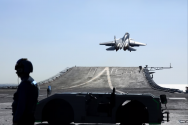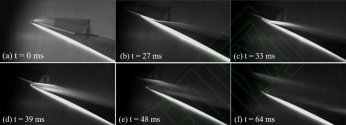I don't quite understand your second paragraph. Yes, MK--41 probably can't fit any hypersonic missiles. MK-57 is wider, but it also looks to be too small to fit LRHW. Maybe they are looking to put it in SSNs? If you take a look at DF-17, it's too big to fit into UVLS. That's why they developed something different for UVLS. The missiles they put in UVLS is likely to have much smaller warhead. Given the range that LRHW is going for, I would be surprised if it had a large warhead. These missiles are reach just to pierce through defenses. I'm not sure how much damage they can do. Guancha folks a while back said YJ-18 does the most damage in terms of warhead size + terminal speed.50kg warhead on ARRW? That would be the same warhead weight as the Shahed 136 kamikaze drone. Even the old Harpoons has 220 kg of warhead.
I'm seeing a trend, starting with Zumwalt DDGs where larger VLS would replace the two ammo-less AGS mounts for launching hypersonic missiles. That way, the USN can have sea-based launch platforms for their hypersonic missiles with minimal reduction to warhead size and range compared to those fitted inside normal VLS. Similar proposals has been made for the upcoming DDG(X)s as well by offering the option to swap some of the onboard Mk 41 VLS with the larger VLS in the future.
Does PLAN have similar plans for their DDGs? Having navalized version of DF-17s (I'll just designate such missiles as DF-XX"N") would enable the PLAN to strike Guam from around 250 kilometers southeast of Taiwan. But for Oahu, Tindal and Diego Garcia, using the DF-17"N" would risk putting PLAN assets into areas that would not guarantee sufficient PLAAF and PLARF cover, therefore having DF-27"N" is very much necessary in those cases.
When we talk about DF-27, it's going to be land based.



